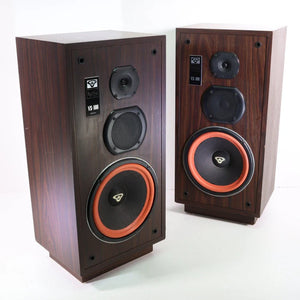We are unable to reply to comments, so please message us directly if you have a specific question regarding products, shipping costs, etc. Our office number is (480) 207-1511. Our email is hello@spencertified.com. You can also message us on Facebook. Commonly asked questions and answers can be found on our FAQs page here.

HOW DOES A SLIDE PROJECTOR WORK?
TRAVELING BACK IN TIME TO THE AGE OF THE SLIDE PROJECTOR!
Does looking at a nice vintage piece make anyone else’s fingers tingle? Whether it’s an old-school receiver with shiny silver knobs or an ancient typewriter, there’s something about the vintage that makes the heart ache and the mouth smile.
Slide projectors, in our opinion, are one of those things. They’re beautiful pieces of equipment that got stamped onto the vintage electronics endangered species list by the digital age. But these were novel pieces of equipment! They became great sources of entertainment and a fun way to share experiences with friends and family. Yet how did they work?
If you’re curious, please join us for a short trip back in time to learn the brilliant methodology behind the slide projector.
WHAT IS A SLIDE PROJECTOR?

A slide projector is simply a machine that projects photographic slides onto a screen. The projector is made up of a light source, lens system, a slide carousel or tray drawer, and a focusing mechanism. Slides are loaded into a carousel or tray, which is then loaded into the projector. The projector enlarges the image and displays it on a wall or screen using a blend of light and lens.
WHAT ARE SLIDES?

To fully understand a slide projector, you also have to understand the tiny transparent slides they use. The pictures are printed onto slides not with negative film (which inverts the picture’s colors), but by keeping the colors the same using transparent film positives. The photographed image is secured “upside down” in a thin glass, plastic, or cardboard frame.
If you hold these slides up to the light, you can see the teeny tiny image, which is pretty cool. But it’s not very clear: the photograph is small, too small to see all the beautiful details and lines and colors. It’s also not very convenient to pass these tiny slides around in large groups. Thus the brilliance of the projector!
LIGHT IT UP-UP-UP!

The heart of the projector is illumination. Once a slide or slide tray is inserted into the projector, the projector uses a light source like a bulb or lamp to illuminate the film. Thanks to the light and a system of lenses and mirrors inside, the projector projects parallel rays of light through the slide.
Then on the other side of the slide rests another lens, which works as our eyes do: it flips and focuses the image. The photo is enlarged thanks to the lens and the rays of light, and so the image is successfully projected onto a surface. The size of the projected image is manipulated by setting the projector closer or farther away from the wall or screen. Too far away, though, and the slide’s image becomes blurry.
Fun Fact! One of the first slide projectors was invented in the 1600s by Christiaan Huygens, a Dutch scientist. This “magic lantern,” a name that came from early audiences who saw angels and demons appear on the wall as if by magic, was illuminated using candles.
JUST A CLICK AWAY


The clicking “shh-kunk” of a slide projector as it turns to a new slide is an unmistakable sound and one of the best parts of the projector’s tactile experience. Using a slide magazine or carousel, projectors can project dozens upon dozens of different images with ease. With just the click of a button, one slide switches to the next. Some projectors even had wired (or, more modernly, wireless) remotes! Being capable of switching between slides from across the room made projectors popular among educators and lecturers, as well as casual consumers who were able to share images of vacations and events with friends and family.
SUMMARY
Though they got swept under the rug by the digital age, slide projectors are still a cool piece of equipment. If you’ve never seen a slide in action, the detail is incredible! Every line is sharp enough to cut, the colors vivid enough to burn. Of course, the image’s quality depends on the slide’s quality, the lens system, and the light/color of the light source, but typically they’re pretty amazing. Plus, slide projectors are, in a word, fun. They’re great pieces of vintage equipment that make the fingers tingle and the ears eager for that unmistakable click-click-click.
Thanks for reading! We hope you enjoyed learning the method behind the madness of vintage slide projectors. Have a great day!



Leave a comment